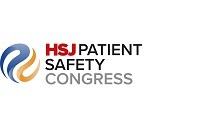Wayne Parslow argues that healthcare needs to leapfrog the technicalities that other industries went through to implement a single electronic system, if it ever really wants to provide true value
It is no secret that IT in healthcare is less advanced than in most other industries.
‘Healthcare is so far behind other industries because of the way the NHS is buying and implementing technology’
Anyone looking in from banking, where highly personal financial information is continuously and securely shared, or from a background where social media is actively used to publish locations, photos, thoughts and messages on a daily basis, would probably struggle to get to grips with the way that patient information is stored on a piece of paper in the place where the patient was treated.
But two decades ago the business world was in the same place that healthcare is today. For example, transactions in one system frequently had to be rekeyed into another, which was time consuming, inefficient and, more importantly, introduced errors and inconsistency.
However, in the late 1990s there was a “gold rush” of electronic systems introduced, effectively providing a single system that drove a seamless, reliable flow of information from one department to another.
The challenge for healthcare
The NHS is now faced with the task of providing value-based healthcare, focused on delivering better outcomes for patients by using the same or less resources as before.
One of the ways to make this happen is by ensuring that integration takes place across the different care boundaries so that patients can be seen and treated as quickly as possible by the right person, in the right place at the right time.
Technology is frequently cited as one of the key ways to enable this, but sadly there are limited examples of how it can and does actually work in practice.
But such integration can only truly happen when a flexible, future-proofed, healthcare IT system is in place to support it. That is to ensure information is accessible across different departments, organisations and boundaries to help reduce duplication, the amount of time spent waiting for information and ultimately improve safety and efficiency in the patient journey.
‘The real decision makers in the NHS need to be clearer and stronger about the demands they make on suppliers’
Just 18 months ago, the challenge that confronted the majority of NHS organisations was that they could have up to 200 different IT systems that “could not talk to each other”.
Now their challenge is of a far greater scale. Not only will many of their systems not exchange information, they will not communicate with other trusts, primary care organisations, ambulance trusts, mental health and social care providers, or even the patient.
Reinventing the wheel?
By using the technology that is out there in the form of electronic patient records, integration engines and clinical portals, this information can be brought together and shared using far fewer resources than before, in turn supporting the value-based healthcare agenda.
But aside from issues around patient confidentiality and security, one of the key reasons why healthcare is falling so far behind other industries in its technological advancement is the way the NHS is buying and implementing technology − and that is what needs to change.
The right solution versus the right architecture
As it stands, when any NHS organisation needs to buy a product it has a legal obligation to go out to procurement with a specific set of requirements. What follows is a complex and costly process that results in the NHS paying the vendor to provide the product it hopes will meet its needs for the next decade or so.
While implementing the right system is imperative, I would argue that in order to ensure you are buying a system that will support value-based healthcare in the long term, getting the architecture right is more important than getting the solution right.
If you get the solution wrong, this does not necessarily have to be such a big issue if it is based on an open, flexible architecture platform that can be adapted and tailored to suit changing needs.
Architecture is a topic often avoided in healthcare for many reasons. It’s complicated, can be tedious and it is often difficult to establish who or where responsibility lies in terms of implementation in NHS organisations. Is it the technical guys, the operational staff or even the clinicians?
Making demands of your suppliers
While I believe architecture needs to be higher up the clinical agenda, it is the real decision makers within the NHS that need to be clearer and stronger about the demands they make on suppliers. That is not only saying exactly what they need, but ensuring solutions are built and tailored to their every requirement.
They also need to be insistent and set criteria that states to suppliers that “we will not work with you unless your products integrate with others so we are not locked into any one vendor.”
In addition, the NHS’s focus should not just be on what the product does when it goes live but what it can deliver beyond that, and how the architecture that it is based on will adapt as staff, strategies and the NHS as a whole changes.
‘The way the NHS implements technology is not agile enough to support the changes it will go through’
In my mind, systems that are implemented and stay virtually the same in terms of functionality for the best part of 10 years cannot support today’s NHS.
Part of the reason behind this is there is a complete organisational mismatch in the way the NHS is structured into three distinct areas. Every organisation has a strategy, it then puts an organisation in place to deliver that strategy. Underneath that it implements IT systems and hardware to help support that organisation.
The problem is the change cycles between those layers. The strategy layer changes in a cycle of one to two years, the organisational layer that supports the strategy changes every three to six months. The software and architecture in the NHS changes every six to 10 years. There is a complete disparity between the ways we have been implementing technology and the way NHS organisations try to deliver it.
Adapt and build
The way the NHS currently implements technology is simply not agile enough to support the changes it will no doubt continue to go through for many decades, particularly when those changes not only depend on the organisation itself but also on the demands that will increasingly be made by patients.
The NHS needs to have a better understanding of the areas where it needs to buy “out of the box” systems and when it should invest in open source solutions. This will help healthcare providers to enable flexibility and change, and future-proof themselves to ensure information becomes an asset that can be shared for the benefit of patients in years to come.
Wayne Parslow is vice president, Europe, Middle East and Africa at Harris Healthcare



























1 Readers' comment